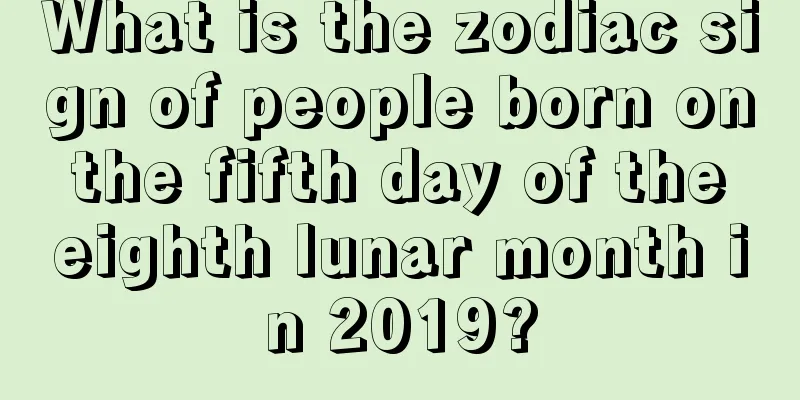Why do people give out red envelopes during the Spring Festival?

Introduction: Every time the Spring Festival comes, children are particularly happy, because during the Spring Festival they can not only eat a lot of delicious snacks, but also get "lucky money" from their elders. But do you know why the elders give children New Year’s money during the Chinese New Year? Is there any special meaning or allusion? Next, let’s explore it with the editor! There is no end to the topics about the Spring Festival, so do you want to know more about it? Just continue to wander in Mr. Shui Mo’s Spring Festival special ocean!The meaning of lucky moneyNew Year's money, also known as "Yasui money" and "Shousui money", is one of the traditional festival items. The original purpose of giving lucky money was to suppress evil and ward off evil spirits. People believe that children are vulnerable to evil spirits, so they use lucky money to ward off evil spirits, help children spend the New Year safely, and wish children good health and good luck in the new year. The history of New Year's money dates back to the Han Dynasty. During the Spring Festival, the elders would distribute the New Year's money prepared in advance to the younger generations. It was said that New Year's money could suppress evil spirits because "岁" (year) and "祟" (sui) are homophones. Therefore, the younger generations could spend a year in peace after receiving New Year's money.The Origin of Lucky MoneyThere is a widely circulated story about New Year's money. In ancient times, there was a little demon called "祟". On New Year's Eve, it would come out and touch the heads of sleeping children with its hands. The children would often cry out of fear, then get headaches and fever, and become fools. Therefore, every family would stay up all night with lights on, which was called "guarding against evil spirits". A couple had a son in their old age and regarded him as their treasure. On the night of New Year's Eve, they were afraid that the evil spirit would come to harm the children, so they took out eight copper coins to play with the children. When the child was tired from playing and fell asleep, they wrapped eight copper coins in red paper and placed them under the child's pillow. The couple dared not close their eyes. In the middle of the night, a gust of cold wind blew open the door and blew out the lights. Just as the "evil spirit" reached out to touch the child's head, flashes of light burst out beside the pillow, scaring the "evil spirit" away. The next day, the couple told everyone how they had scared away the evil spirit by wrapping eight copper coins in red paper. Everyone followed their example and the child was safe and sound after that. It turned out that the eight copper coins were transformed by the Eight Immortals, who came secretly to protect the child. Because "祟" and "岁" are homophones, it gradually evolved into "lucky money".Three interesting legends about New Year's money1. It originated from the ancient practice of “suppressing shock”. It is said that in ancient times there was a ferocious beast called "Nian", which would come out at night every 365 days to harm humans, animals and crops. When children are afraid, adults will use the sound of burning bamboo to drive away the Nian and comfort the children with food, which is called "suppressing the fright". As time went by, it evolved into using currency instead of food, and by the Song Dynasty, there was "money to calm the nerves". According to historical records, Wang Shao's son Nan Xi was carried away by bad guys. He screamed on the way and was rescued by the imperial carriage. Song Shenzong gave him the "golden rhinoceros coin to calm his nerves". Later it developed into "lucky money". 2. It first appeared in the Tang Dynasty court, when there was a trend of giving away money in the palace. Wang Renyu wrote in "Kaiyuan Tianbao Remaining Stories": During the Tianbao period of Emperor Xuanzong of Tang, "the concubines in the inner court would gather in groups of three to five in the Forbidden City every spring to play coin throwing." Wang Jian recorded in "Palace Poems": "Before dawn, with the remaining powder from the previous night's makeup on, they would always stand by the flower trees in Zhaoyang. In spring, the concubines would always have white hair, and gold and silver coins would be scattered from the treasury." From "throwing money for fun" in spring, to "scattering gold and silver coins", and later developed to giving "baby-washing money". According to Sima Guang's "Zizhi Tongjian", when Yang Guifei gave birth to a son, "Xuanzong personally saw the baby and happily gave the concubine money for washing the baby" to congratulate her and ward off evil spirits. By the Song and Yuan dynasties, it had become a folk custom. It was combined with the Spring Festival on the first day of the first lunar month to form the early "lucky money". But there was no currency in circulation at that time, only a special kind of "New Year's money". 3. Legend has it that in ancient times, every New Year’s Eve, wild beasts would take away and eat children while the adults were sleeping, so many places have the custom of not sleeping on New Year’s Eve. But one time, a mother put a copper coin in a red bag and placed it under her child’s pillow. It turned out that the wild beasts did not dare to approach the child. Therefore, from then on, every New Year’s Eve, adults would give children or younger generations New Year’s money. The "Sui" is said to be the name of a beast, and this is the origin of the red envelope.The development and changes of lucky moneyHowever, the earliest "money" for New Year's money was not currency circulating on the market, but auspicious or evil-averting items specially cast into coins, which were amulets worn by children. Because "祟" (sui) sounds the same as "岁" (year), the New Year's money has the magical effect of "warding off evil spirits". Since the Song Dynasty, people have used real circulating coins as New Year's money, and it became widely popular in the Ming and Qing dynasties. In the Ming and Qing dynasties, the elders would string copper coins together with red thread and give them directly to the younger generations after the New Year’s Eve dinner, or place them at the foot of the bed or next to the pillow after the younger generations went to sleep. If the sleepy child has fallen asleep, the elder should leave a copy and put it under his pillow. The next morning, the child got up and turned over from under the pillow, to his surprise. After using banknotes, parents like to choose new banknotes with connected numbers, because "lian" and "lian" are homophones, which means their offspring will "make money continuously" and "have high scores continuously". The money wrapped in red paper is called "auspicious red envelope". New Year's money is not only money, but also New Year's plates, New Year's fruits and so on. The amount of New Year’s money varies, but it can bring children the joy of independent spending.Summary: The above article content is an introduction to the origin and customs of elders giving New Year’s money to children, which I have compiled for readers. You can learn about it. Don’t get the New Year’s money for so many years and still don’t know what it means! |
Recommend
Is it true that there will be thunder before Guyu in 2021? Taboos during Grain Rain
China is a very traditional country, so there are ...
Where is the position of the God of Happiness in the Year of the Rooster? How to welcome the God of Wealth
Introduction: Our country is a traditional country...
Is it a good idea to get married on the 22nd day of the 12th lunar month in 2019? Can I get the marriage certificate?
The twelfth lunar month is a month full of the fes...
Can’t we visit the graves and pay respect to our ancestors during the Lantern Festival? Auspicious days for worshipping in the first month of 2021
The Lantern Festival is a big day when the God of ...
Is it a good idea to get a haircut on the second day of the ninth lunar month in 2018? What is the origin of haircut?
In ancient times, getting a haircut was a big deal...
What is the zodiac sign for people born on July 12, 2018 in the lunar calendar? Love analysis for Leo men!
Introduction: People born on different days belong...
Will a baby born on Torch Festival in the Year of the Ox have a good fate? How to name the eight characters?
When a child is born, the happiest people are the ...
What day is March 3rd in 2018? Which ethnic festival is it?
Introduction: Our country is a traditional multi-e...
Are people born in the year of the dog good or bad? What is their fate?
The culture of solar terms is the crystallization ...
Can I sign a contract on the tenth day of the eighth lunar month in 2018? What does the hexagram indicate?
Signing a contract is actually a kind of legal bin...
What is the zodiac sign of a child born on Mid-Autumn Festival in 2018? Do people born on Mid-Autumn Festival have good personalities?
Introduction: Mid-Autumn Festival is an important ...
How about March 26th of the lunar calendar in 2020? Is it suitable for a funeral?
The lunar calendar is different for different days...
What zodiac sign is on the 26th day of the twelfth lunar month in 2019? How is the fortune of people born on this day?
What zodiac sign is on the 26th day of the twelfth...
Is November 20th of the lunar calendar 2020 an auspicious day? Is it a good idea to move house?
The weather in mid-winter is solemn and the grass...
Can I sign a contract on the ninth day of the first lunar month in 2018? What should I pay attention to?
Signing a contract is a written record of people&#...









